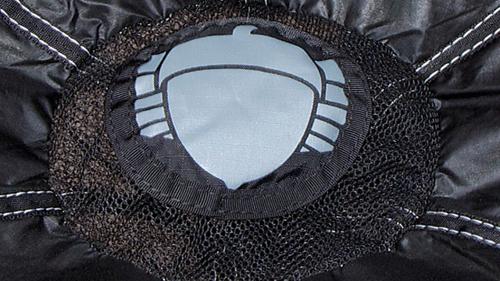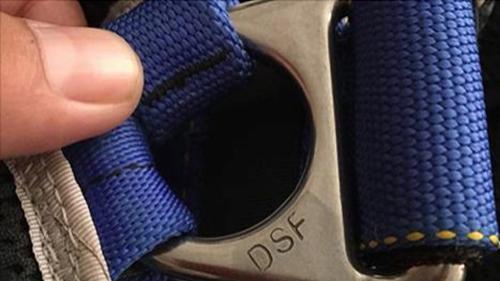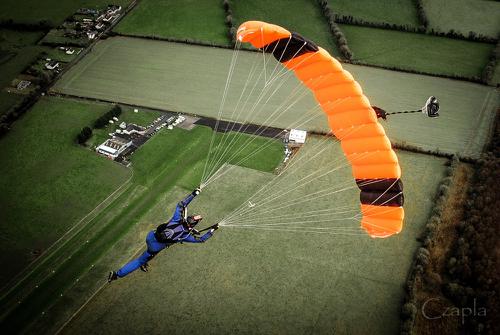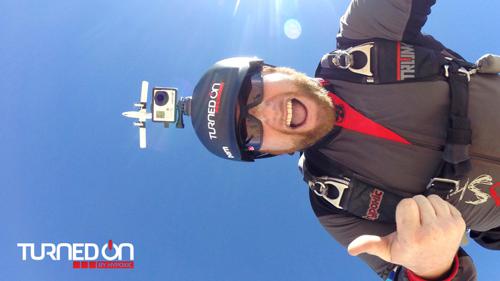Introducing The Squirrel Snatch BASE Pilot Chute
The Squirrel Snatch is a revolutionary new product that sees the first BASE targeted development of a toroidal design for a pilot chute. Although the design has been used extensively in the development of non-sport parachutes for over 40 years, until now it's never been manufactured for BASE or skydiving. The idea was born from a discussion between the company's co-designer and CRW expert, Jim Rasmussen.
The toroidal design (also known as a Pulled-Down-Apex design) that the Snatch uses, is a complex and costly product to produce and was no small undertaking by the company. The Snatch has a three dimensional partial toroidal shape and is joined together with two mesh cones, allowing for extremely high drag co-efficiency. Squirrel Wingsuits discuss the differences between the shape of a toroidal design and that of the common pilot chute by saying, "Traditional PCs are two circles sewn together around the edges, typically one of ZP and one of mesh, with a piece of line or webbing connecting the center of each circle together at a specific distance. When pulled from the center of the mesh circle and dragged through a fluid, it inflates into a rough approximation of a pulled-down-apex shape, but with a large amount of distortion and error, with a wrinkled and asymmetric circumference. Imagine crumpling up a single piece of paper until it forms the 3D shape you want to design - it won't look good, nor be an accurate representation of a 3D surface. Yet that is the current basis of traditional PCs: an approximate and inefficient 2D design meant to perform a task that requires a 3D shape."
Squirrel used an ellipse with a 7:10 (H:W) ratio, with an axis offset of 20% of the width in the development of the torus. The tangent formed with the cones and partial torus was calculated precisely to ensure that the ZP had a smooth transition with the mesh. This allows for the ability to maintain a smooth error-free perimeter on the pilot chute.
Innovation aside, the most impressive part about the Snatch is the enhanced performance over regular double circle pilot chutes. Because of the shape of standard pilot chutes, the surface area is usually met with an imbalance of stress, with some areas being pulled more than others, and material being "loose". The randomness aspect that is present in these regular pilot chutes gets minimized with the toroidal design of the Snatch. Unlike normal PCs which are constantly changing shape as airflow moves around the creases and wrinkles, the toroidal design inflates to its intended shape and remains that way, without the pulsing that is usually witnessed.
When inflated, the Squirrel Snatch takes the shape of a 3D object, with specifically calculated gores.
This increase in inflation performance is easily seen in testing where far superior stability was witnessed in both wind tunnel and field testing.
Symmetry is one of the most important factors in the performance of a pilot chute, and each Snatch is guaranteed to be symmetric, with the build tolerance being set at a stringent 1mm +/-.
The focus with the Snatch has not only been on general performance and innovation, but also on safety. Squirrel decided that due to the suggested risks involved with heavy handles, and their involvement in entanglements, that they wanted to produce the lightest possible design, without compromising on durability. The decrease in weight means that bridle entanglements become less likely. The Snatch uses hexagonal carbon-fiber handles for sizes 32, 34, 36 and 38. The 42 featured a pad-patch top with no carbon, while the 46 and 48 are handle-free, for hand held use.
The Snatch already has several skydivers wondering whether or not they will be able to use it on their skydiving rig, or whether the company plans to release a skydiving specific toroidal PC in the future, as well as whether or not this is a development that could change the development and focus of PCs in general.
Squirrel have open sourced the design, in the attempt to get more BASE jumping what they consider to be a higher performance and safer design. For those looking to build their own toroidal PC, you can get in contact with Squirrel via e-mail and they will provide you with the 2D patterns for all sizes.









